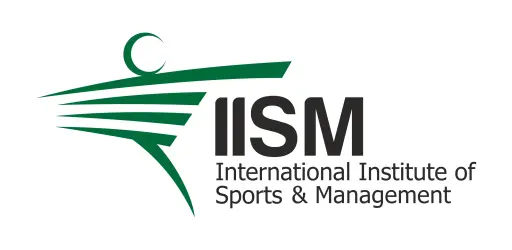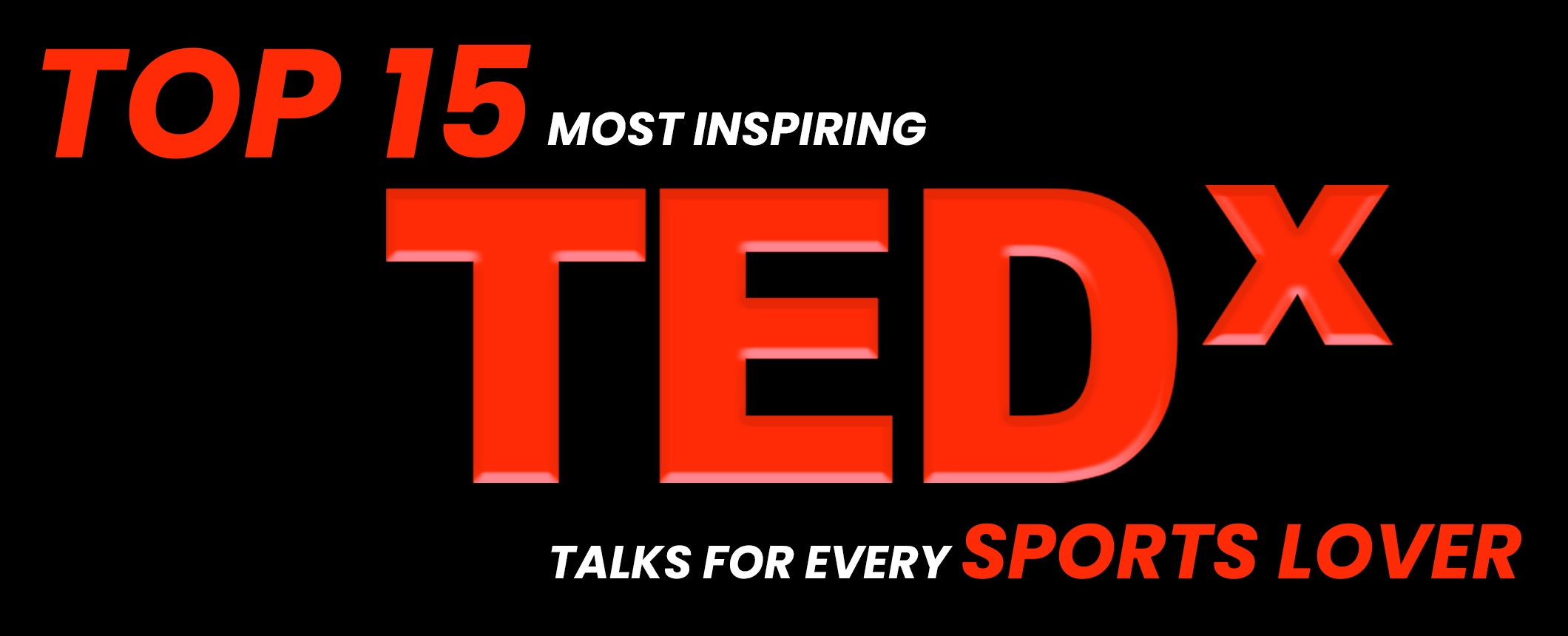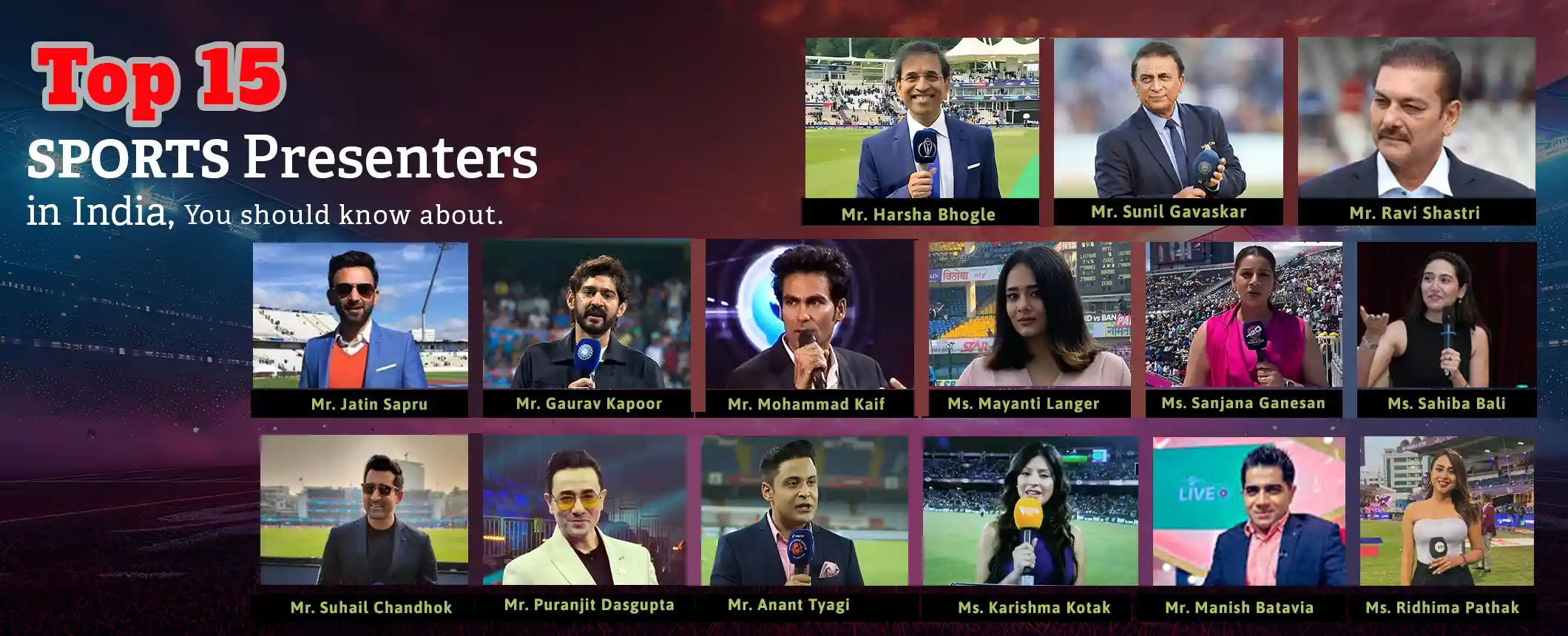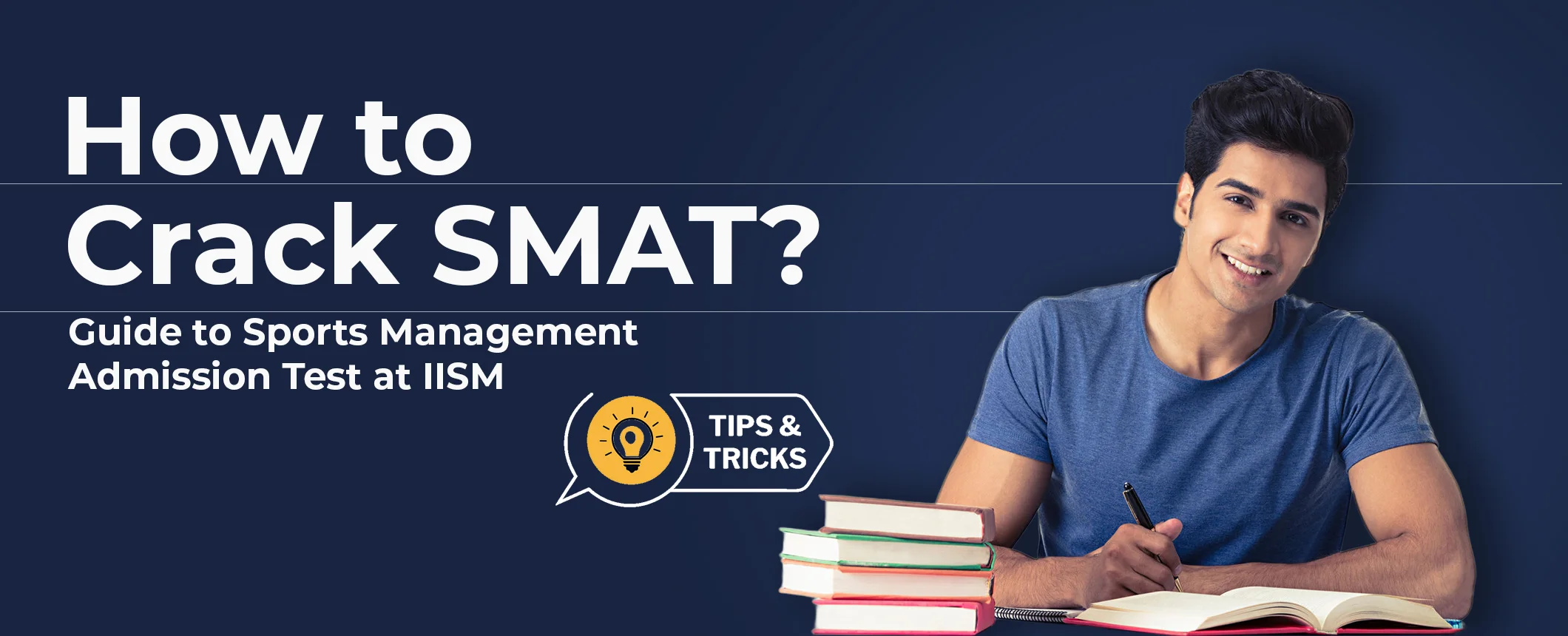What is Sports Science? — Verticals, Importance & Scope
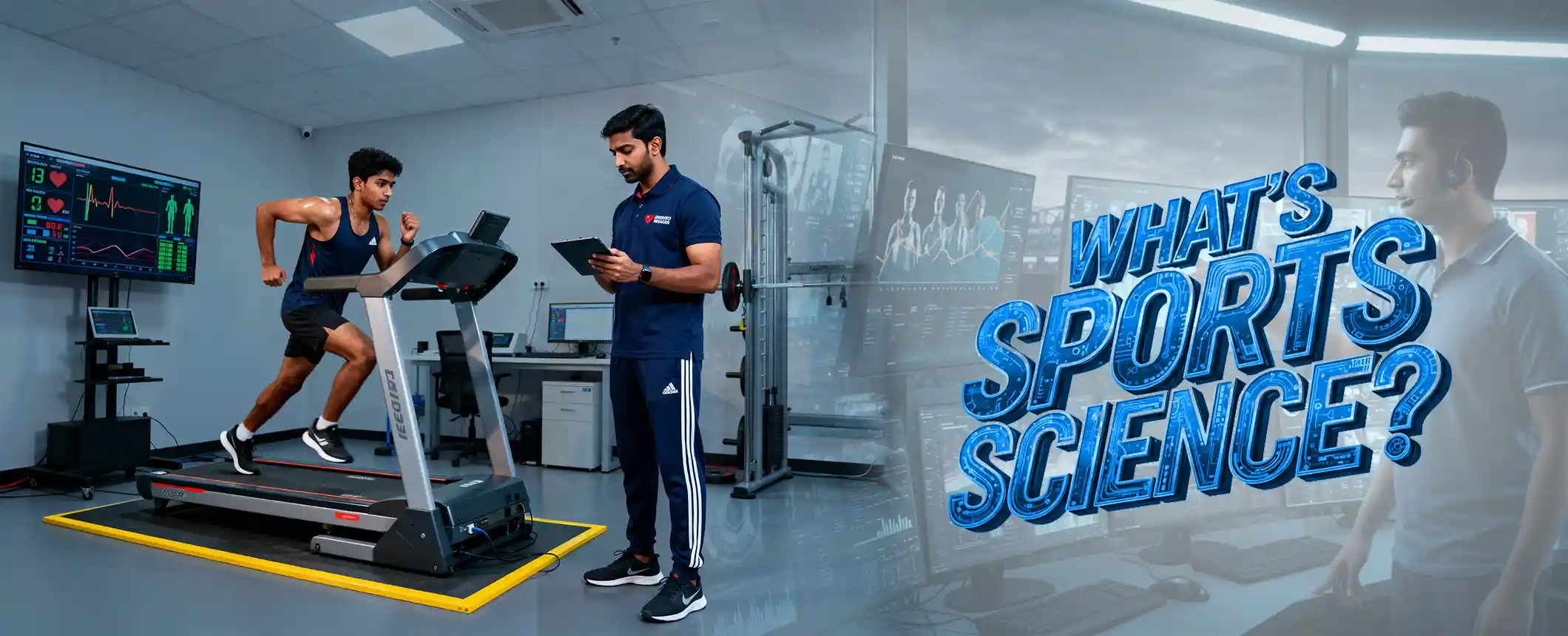
Athletic performance isn’t just achieved on the field. There’s a lot of groundwork that goes behind improving a player’s physique, diet as well as physical & mental fitness, before they can perform at the highest level without much hassle.
And there’s a perfect field of study that aims at optimizing performance in this way: Sports Science.
What is Sports Science?
Sports Science is the interdisciplinary study of how the human body and mind respond to exercise, training, and performance. It merges physiology, biomechanics, nutrition, psychology, data analytics, and technology to enhance every aspect of an athlete’s preparation — from nutrition and recovery to mindset and movement.
While regular exercising and diet maintenance is still important, Sports Science goes a few steps forward to sophisticate these processes with nutritional evaluation, biomechanical analysis, and correcting exercise forms using physiology.
All in all, Sports Science is a vast field that can completely change an athlete’s on-field performance and shape them into a world champion.
So, let’s dive deep into the realm of Sports Science and understand its importance, verticals, and how one can pursue a promising career in this evolving field.
Why is Sports Science Important?
Elevating performance using Sports Science has become increasingly important as athletes are chasing every goal, every meter and every millisecond of performance to become the best.
Athletes nowadays need to focus on their fitness levels come what may with the global competition standards levelling up. While increasing intensity and frequency is a plausible solution, it can easily cause issues.
Overtraining or ineffective training patterns is a crucial factor why some athletes are often injury-prone. Working out with the wrong exercise form, pushing your body beyond the natural limits, and consuming the wrong diet are all reasons behind players getting injured, not performing to their expected benchmark and generally facing health issues.
Sports Science helps in overcoming all these aspects and shaping world champions. The multiple verticals of this fascinating sector are the real game changers in uplifting any athlete.
Verticals of Sports Science
Exercise Physiology
Exercise Physiology is the study of physical activity during exercising and how it affects the body’s muscles, organs & tissues. This impact is analyzed at the cellular level, at the skeletal level and even at the cognitive level.
While exercising and its benefits are widely endorsed by everyone, the main purpose of exercise physiology is understanding its effect on the body, how it can impact our genetics, cell and tissue health, organ system functioning and overall bodily function.
It has been found that exercise physiology helps in reducing the risk of heart diseases, diabetes, and many other chronic ailments.
For athletes, exercise physiologists play a crucial role. They analyze the player’s complete routine, body type, medical history before creating a personalized training regimen.
Wearable biosensors allow physiologists to track real-time metabolic data and fine-tune training programs remotely.
Read More: Sports and Exercise Physiology in India Decoded by Dr. Pralay Majumdar
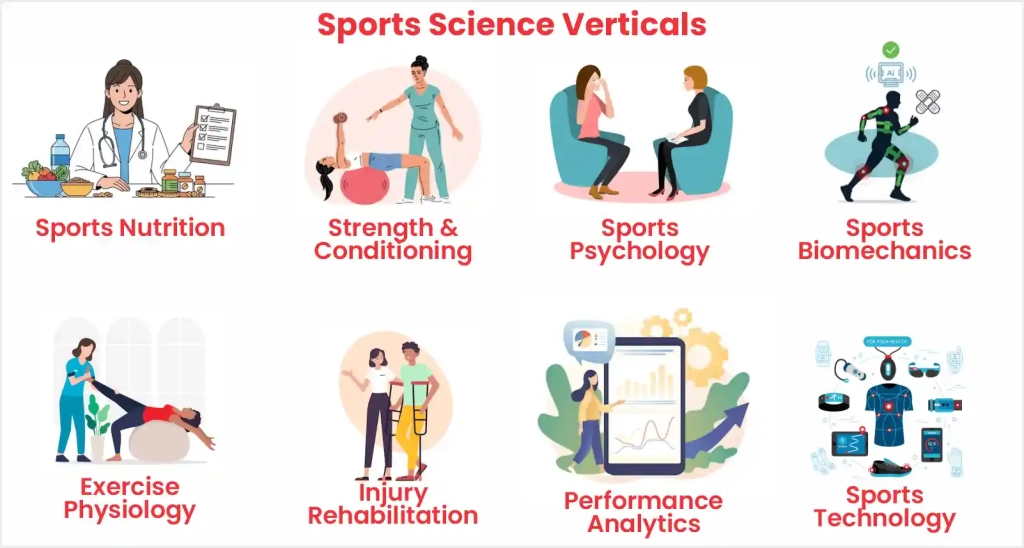
Sports Science Verticals
Strength & Conditioning
Strength & Conditioning is one of the most important and specialized fields in Sports Science, and a pivotal aspect for any athlete’s development.
It helps athletes enhance their physical performance on the field and reduce injury risk. Any player wanting to play for a long time in his/her career needs to uplift their fitness levels by working with strength & conditioning specialists.
Strength & Conditioning helps to improve the athlete’s strength, power, endurance, agility, speed and flexibility. This entire process is different from traditional training as strength & conditioning workout regimens can have specific focused exercises considering the player’s body’s type, on-field fitness requirements, and overall health condition.
The trend now is data-led periodization — coaches use AI to predict fatigue and performance readiness. Recovery science (sleep tracking, cryotherapy, HRV monitoring) has become as vital as the workout itself.
Now, the impact of strength & conditioning shows on the field when these athletes deliver peak performance more consistently. Eventually, strength & conditioning also helps in enhancing the athletes’ career span.
Learn more about these aspects in our blog titled Strength & Conditioning Explained | Ultimate Guide
Sports Nutrition
The importance of nutrition and consuming the right kind of diet in any athlete’s life cannot be understated. Besides the right workout and training, diet is equally crucial to on-field success, which brings Sports Nutrition into the picture.
Sports nutritionists work with athletes and sports teams on a regular basis to analyze their diet plans and modify them based on their knowledge of nutrition & dietetics. Consistent monitoring of these plans also comes under a sports nutritionist’s purview.
Nutrition science has shifted from “one-size-fits-all” to DNA-based and microbiome-personalized diets. In modern sport, nutrition is no longer just about eating right — it’s about eating intelligently. Sports nutrition has evolved from traditional meal planning to a science-driven, data-informed discipline that optimizes performance, recovery, and long-term health.
Learn more about Sports Nutrition in our blog titled Sports Nutritionist – Careers, Job Description, and Benefits
Sports Psychology
Mental fitness is no longer a side topic — it’s a pillar of performance.
Nerves can get the better of any sportsperson on the field. However, there is a field that helps champion athletes get the better of these nerves and capitalize on crunch situations: Sports Psychology.
Sports Psychology blends together psychology principles with sports science to uplift an athlete’s confidence and motivation. Sports Psychologists also work on athletes’ mental health, help their manage their stress and stay in the ideal psychological state to deliver top-notch performance on the field.
A sports psychologist can help during various phases of a player’s entire career journey, helping him/her through rough patches of form, setbacks, injuries, and how to deal with rising fame and attention as well.
More or so, though, it revolves around being their key source of motivation and providing techniques to improve concentration and focus so they can perform under pressure when it matters in the arena.
Post-COVID, there’s also growing focus on mental load management, balancing social media pressure, and maintaining athlete well-being.
Sports Biomechanics
Biomechanics is one of the most interesting yet tedious verticals of sports science with multiple scientific principles taken into consideration. It is the study of mechanical movements of the body and the force generated to make those movements.
Biomechanics consists of two separate aspects: Kinematics & Kinetics. Kinematics mainly focuses on analyzing the geometry of the body’s motion, with aspects like velocity, displacement & acceleration coming into the picture.
Meanwhile, Kinetics deals with the force factor that the body generates to create those movements. The stimulus and impact of that force is both taken into account to derive insights on how efficient and effective a player’s movement is.
AI motion analysis and VR-based simulation labs are making it possible for athletes to virtually fine tune their technique — before stepping onto the field.
Injury Rehabilitation
With injuries being a part & parcel of the game, the systematic process of rehabilitation has become vital in the sports industry.
There are five major aspects to Injury Rehabilitation namely, Pain Management, Flexibility & Range of Motion (ROM), Strength & Endurance, Muscle-joint Coordination, and Functional Rehabilitation.
Pain Management mainly deals with mitigating the immediate effects like inflammation, burning sensation & pain through short-term medications. Flexibility & ROM focuses on keeping the biomechanical movements of other body parts functioning, as injury trauma can hamper that.
Strength & Endurance training needs to happen during an injury to avoid muscle atrophy. Similarly, to maintain the connection between muscle and joints, simple exercise movements can go a long way during an injury phase.
The final phase of Functional rehabilitation involves getting the athlete’s body to the pre-injury level of functioning with practical tests or in-game simulations.
Performance Analytics
Performance analytics involves the recording of on-field performance data of athletes to provide them accurate insights on their strengths and weaknesses besides their areas of improvement.
This gathering of information involves usage of sports technology such as wearable tech, video analysis systems such as computer vision, and many other smart & AI-enabled technologies.
The advent of AI is further amplifying the scope of Performance Analytics as data insights have become richer with generative AI and predictive modeling helping to map future course of action for players’ training.
Teams use GPS trackers, AI dashboards, and predictive models to monitor load, fatigue, and readiness.
Sports Technology
Be it wearable tech, GPS & motion sensors, nutrition-tracking apps or Virtual Reality (VR) tools, sports technology is required in all various verticals of Sports Science.
In all the above fields including biomechanics, strength & conditioning, performance analytics, injury rehabilitation, sports technology has an important part to play.
Motion sensors and computer vision tech are pivotal for biomechanical analysis. Meanwhile, wearable tech along with sensors can be more than handy to record and analyze data from strength & conditioning workouts.
For injury rehabilitation as well, sports tech like Augmented Reality (AR) and Virtual Reality (VR) tools can help massively to simulate real-life game situations during the recovery phase.
That is why understanding and adapting to sports technology has become an integral requirement for Sports Science professionals.
How Sports Science Helps Athletes
Every vertical of Sports Science helps in enhancing a player’s health, fitness, and performance levels on both the physical and psychological front.
In today’s day and age, Sports Science has become integral to long-term athlete development and its verticals are interlinked, which leads to their specialists work in tandem often.
Now, athletes may be given a set schedule of needing to have recovery session with injury rehabilitation specialists — who also look after injury prevention — post having a biomechanical analysis or a strength & conditioning session.
With the body showcasing peak performance levels during each of these sessions, recovery is quite important.
This is one instance of how Sports Science fields are interlinked. From the broader perspective, the summation of such focused training and development under these various verticals richly enhances an athletes’ performance attributes.
Their endurance, flexibility, power, speed and mental resilience can steadily increase and sustain to completely transform their on-field performance. Moreover, susceptibility to injury and career longevity also improve.
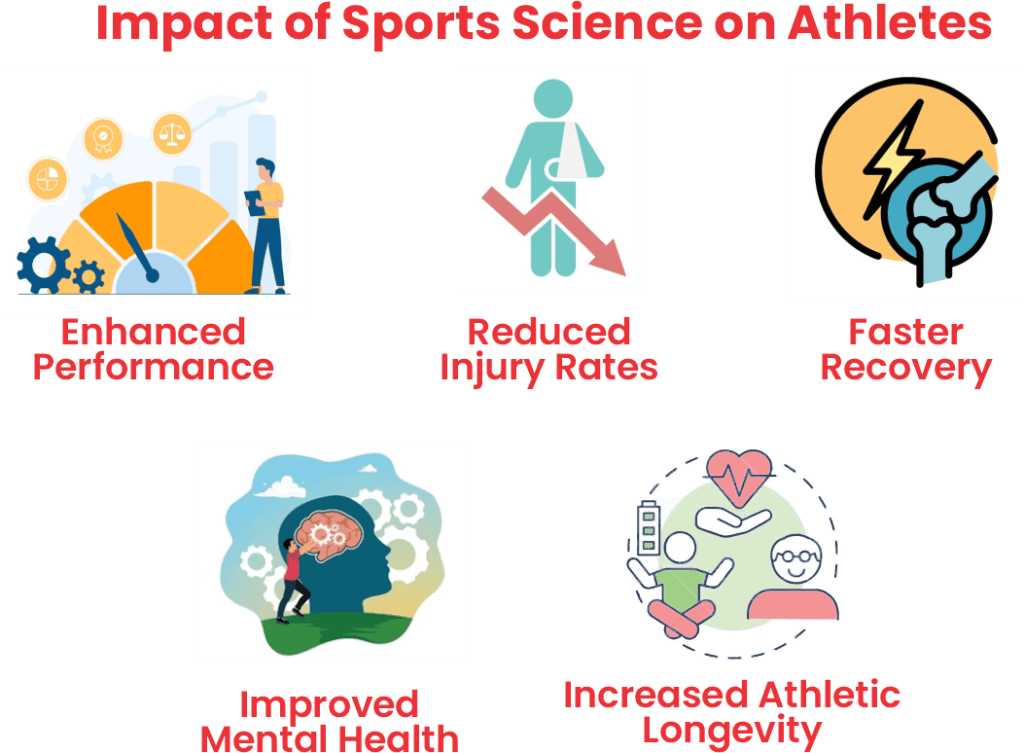
Impact of sports science on athletes
From biomechanics labs to mindfulness rooms, Sports Science is redefining how we train, recover, and perform. The modern athlete’s success depends not only on skill but on a scientifically supported system that integrates the body, mind, and technology.
Sports Science Careers & Education
With the increasing importance of Sports Science for athletic development, there is high demand for well-trained Sports Science professionals in the sports industry.
That’s the reason there are several institutes globally offering Sports Science courses. And this new wave of careers is also spreading in India with undergraduate and postgraduate courses in Sports Science.
However, in terms of specializing in one of the verticals explained above, one needs to pursue B.Sc or M.Sc degrees in the particular field such as Sports Nutrition or Sports Psychology.
On top of that, fields like Strength and Conditioning require additional certifications from bodies like NSCA (National Strength and Conditioning Association) and ASCA (Australian Strength and Conditioning Association).
For Sports Science as a whole, though, Bachelor of Sports Science (BSS) and Master of Sports Science (MSS) — two courses IISM offers — is a ideal foundation that many stalwarts from the industry recommend.
The reasoning behind studying BSS or MSS is quite simple: it gives a solid baseline for understanding the industry’s intricacies from a fundamental perspective to the advanced level.
For instance, a BSS graduate would enter the industry at the junior level, with minimal experience and industry expertise. However, organizations look for an MSS graduate for senior-level roles as the level of expertise gained via MSS is far more detailed and advanced.
At IISM, Bachelor of Sports Science (BSS) is a three-year undergraduate programme, covering the basic and intermediate aspects of all various verticals. Meanwhile, Master of Sports Science (MSS) is a two-year postgraduate programme, that dives deep into specific, focused aspects of the field.
Works Opportunities in Sports Science: India & Abroad
The demand for Sports Science professionals has often been high in foreign locations such as Australia, the USA, and the European countries.
Australia, in particular, focuses quite meticulously on sports and prioritizes athletic development via Sports Science. They design training and recovery plans for players in each sport, and utilize the impact of strength & conditioning, biomechanics, sports psychology and sports nutrition to the fullest.
Working in sports federations, associations and teams in these countries abroad can give you a detailed on-ground understanding of how these Sports Science fields enhance a player’s performance attributes on all fronts.
There are ample internship and apprenticeship opportunities available in these kinds of sporting organizations abroad. Moreover, there is good scope of full-time employment as well across a plethora of sports such as football, tennis, motorsport, track & field, golf, and many more.
Coming to India, the importance of Sports Science has been on the up in recent times. With more and more educational programs and career pathways opening up in the sports industry, there are several untapped sports in India where Sports Science professionals have immense scope as of date.
Cricket, being the most popular sport in the country, naturally creates more openings for physiotherapists, sports nutritionists, sports psychologists, and strength & conditioning coaches.
However, other sports like Tennis, Golf, and Motorsport — still at a nascent stage in India — also need all kinds of Sports Science professionals. Apparently, these sports also offer higher pay scale.
With a proper ecosystem being built around these various sports in India, there is an increased focus on Sports Science. People in the industry are understanding why this field is pivotal to on-field success. Racing and tennis, in particular, require a lot of involvement from exercise physiologists, strength & conditioning specialists, nutritionists as well as sports psychologists.
Even the National Sports Policy (2025) along with the Sports Governance Bill launched by the Indian Ministry of Sports & Youth Affairs has underscored how the various verticals of Sports Science can positive impact India’s athletes and uplift their performance levels on the global stage.
So, in terms of long-term job opportunities in Sports Science, more avenues will open in the Indian sports ecosystem in the future.
Conclusion
The bottom line is clear: Sports Science is a majorly important field for athletic development and its implications are integral to several sports nowadays.
With proper experts on sports nutrition, franchise league teams are personalizing their players’ diets with exactly what’s needed from a competitive perspective. Sports Psychology has caught many people’s eye, as athletes who crumble mentally due to the increasing stress of game schedules and other factors seek professional psychological help.
Having sports psychologists in national teams just bridges the gap further and can transform major World Cup and Olympic campaigns. Likewise, the above mentioned benefits of strength & conditioning, exercise physiology, and injury rehabilitation are being understood on a deeper level by the sports industry stakeholders.
Australia’s cricket team and their athletes across various sports are a classic case study on how fields like sports psychology, biomechanics and strength & conditioning can help them perform under pressure and consistently triumph on the global stage.
Even India’s 2011 Men’s Cricket World Cup victory had the integral contribution of Strength & Conditioning expert, Mr. Ramji Srinivasan — an industry stalwart and guest faculty at IISM.
So, as mentioned above, the scope of Sports Science as a field is skyrocketing both globally and in India. And this is a career that can help you shape world champion athletes and power dreams of winning a World Cup or an Olympic Gold.
If this is something that gets you excited to become a Sports Science professional, visit our website to know more about this fascinating field.
Reviewed by Ms. Manali Patil — a Clinical Nutritionist & a Registered Dietitian — who works as an Assistant Professor in Sports Science programmes at IISM.
